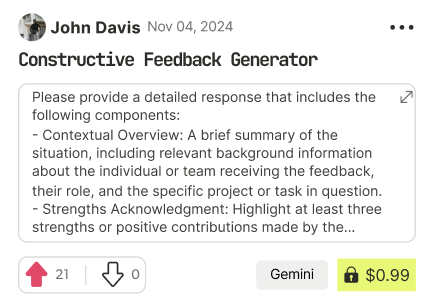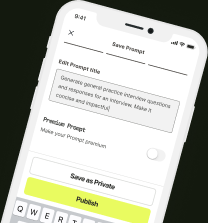prompt mine App
Find, Create & Share AI Magic
Comprehensive Git Branching Strategy Manual for Collaborative Projects
Introduction to Git Branching Strategies
Implementing a Git branching strategy is essential for maintaining order and efficiency in collaborative software development. This manual provides a detailed guide on how to effectively utilize branching strategies, focusing on best practices for version control management.
Recommended Git Branching Strategies
1. Feature Branch Workflow
This approach involves creating a new branch for each new feature or task, allowing developers to work in isolation until the feature is complete.
Implementation Steps:
- Branch Creation: Use the command git checkout -b feature/my-feature to create a new branch.
- Development: Commit changes frequently using descriptive commit messages.
- Merging: Once the feature is completed, merge it back into the main branch with pull requests after code review.
Example:
bash
git checkout -b feature/user-authentication
Make changes...
git add .
git commit -m "Implement user authentication"
git checkout main
git merge feature/user-authentication
2. Git Flow
Git Flow is a well-defined branching model that uses multiple branches for managing features, releases, and hotfixes.
Implementation Steps:
1. Create separate branches:
- develop: For ongoing development.
- master: For stable releases.
- feature/: For specific features.
- release/: For preparing production releases.
- hotfix/: For immediate fixes in production.
2. Merge using predefined rules:
bash
git flow init Initializes the repository with necessary branches
git flow feature start my-feature Starts a new feature
3. Finish and merge:
bash
git flow feature finish my-feature Merges the feature into develop
3. Trunk-Based Development
In this model, developers work on short-lived branches which are merged back into the main branch frequently (ideally multiple times per day).
Implementation Steps:
- Keep branches minimal—typically no longer than one day.
- Continuously integrate changes into the trunk (main) using small commits.
Example of Continuous Integration:
bash
git checkout main
Make quick changes...
git commit -m "Quick fix on login UI"
Conflict Resolution Best Practices
When merging branches, conflicts can arise when two or more changes are made to the same line of code or adjacent lines. Here’s how to handle them:
1. During merging, if conflicts occur:
bash
git status To identify conflicted files
2. Open conflicted files in an editor; resolve conflicts manually by choosing appropriate code versions from both branches.
3. After resolution, mark files as resolved:
bash
git add resolved-file.js
4. Complete the merge:
bash
git commit -m "Resolved merge conflicts between feature/my-feature and main."
Maintaining a Clean Commit History
To ensure a clean and understandable commit history:
- Use rebasing instead of merging where possible:
bash
git checkout feature/my-feature
git rebase main Reapply your commits on top of latest main commits
- Squash commits related to a single logical change before merging.
Integration Into Team Workflow
To implement this branching strategy within your team's workflow:
1. Conduct team training sessions to familiarize all members with these strategies.
2. Set up guidelines for naming conventions (e.g., prefixing branch names with 'feature/', 'bugfix/', etc.)
3. Utilize Pull Requests (PR) as checkpoints before merging any branch into the mainline to ensure reviews are conducted consistently.
By following these comprehensive steps and strategies outlined above, your team can efficiently manage their version control processes while minimizing complications arising from collaboration challenges in projects utilizing Git as their source control management tool.

Find Powerful AI Prompts
Discover, create, and customize prompts with different models, from ChatGPT to Gemini in seconds

Simple Yet Powerful
Start with an idea and use expert prompts to bring your vision to life!

